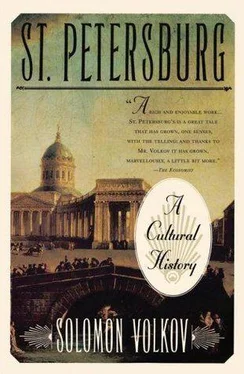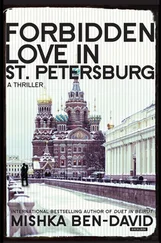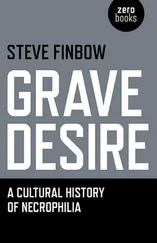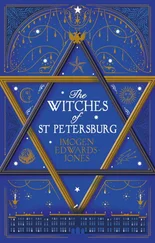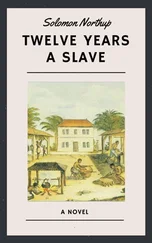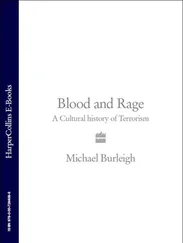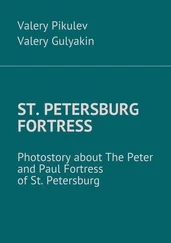The Petersburg mythos, according to a modern scholar, “reflects the quintessence of life on the edge, over the abyss, on the brink of death.” {4} 4 4 Ibid., p. 28.
A watershed in its existence arose in late-nineteenth-century music, when Peter Tchaikovsky in his ballets and particularly in his “Petersburg” opera, The Queen of Spades (based on Pushkin), combined that sense of life over the abyss with a premonition of his own tragic end and injected a searing nostalgia into the Petersburg mythos.
Never before had music played such a decisive role in the drastic transformation of a great city’s image. Under the influence of Tchaikovsky’s music, Mir iskusstva, led by Alexander Benois and Sergei Diaghilev, began resurrecting the idea of Petersburg as a providential and vitally necessary cultural and spiritual leader of Russia. They shared Tchaikovsky’s foreboding of cataclysms threatening the city. This was the genesis of Bakst’s Terror Antiquus.
The premonitions of sensitive creative artists proved to be prophetic. From the moment of its establishment, Petersburg was subjected to destructive floods. And in the twentieth century its culture and the city itself were in fact in danger of disappearing. It was ravaged by terror and hunger, underwent three revolutions, and suffered a siege unparalleled in modern history. It ceased to be the capital of the country and lost its best people, its self-respect, its money and power, and, finally, its glory.
By the middle of the twentieth century the Petersburg mythos was submerged. One could only surmise its existence, as if the city had become another Atlantis.
Of course, even in Stalinist Russia the works of Pushkin and Gogol were studied, but Dostoyevsky was under deep suspicion. Tchaikovsky’s role in the renaissance of the Petersburg mythos was not mentioned, and Boris Asafyev’s early pioneering works on the subject were banned. There was no possibility of openly discussing the Petersburg texts of the twentieth century—they had vanished into a historical black hole.
Russian modernist movements were branded “decadent” in the Soviet Union. The Silver Age—the brilliant flowering of Russian culture after 1910, or as Akhmatova put it, “The time of Stravinsky and Blok, Anna Pavlova and Scriabin, Rostovtsev and Chaliapin, Meyerhold and Diaghilev,” was officially termed “the most shameful and most mediocre” period in the history of the Russian intelligentsia. The Party verdict on Akhmatova declared, “Akhmatova’s work belongs to the distant past; it is alien to contemporary Soviet reality and cannot be tolerated on the pages of our magazines.” {5} 5 5 Doklad t. Zhdanova o zhurnalakh “Zvezda” i “Leningrad” (Comrade Zhdanov’s Report on the Journals Zvezda and Leningrad ) (Moscow, 1946), p. 16.
This was the attitude toward almost all Petersburg culture of the early twentieth century, with the exception of two or three figures retouched beyond recognition.
It was not simply a question of aesthetics but of politics as well. Both Lenin, who moved the capital back to Moscow from Petrograd in 1918, and Stalin, who subjected Leningrad to terrible suffering, felt nothing but suspicion and hostility for the city, fearing the development there of a hotbed of political and cultural opposition. This unwillingness to tolerate the city in his empire was shared by another notorious dictator of the century, Adolf Hitler.
The assassination in 1934 of Party boss Sergei Kirov in Leningrad, sometimes called in Russia “the murder of the century,” gave Stalin (now believed to be its real perpetrator) the excuse to unleash a squall of terror on the city. After the war Stalin fabricated the “Leningrad Affair,” which put the city back on the political blacklist. As a result, according to the writer Daniil Granin, “the name ‘Leningrader’ was used more and more infrequently. After the Leningrad Affair it sounded suspicious.” {6} 6 6 Daniil Granin, O nabolevshem (About What Has Been Hurting) (Leningrad, 1988), p. 73.
During my youth, it was impossible to talk about any of this in public. Even the complete truth about the city’s incredible suffering during the 900-day German siege was suppressed by the Soviet authorities. We all lived with the impression that the city had a gigantic gag down its throat. Its past was being destroyed, its present humiliated, and its hopes for the future torn out by the roots.
The French Enlightenment philosopher Denis Diderot had this to say about the move of the Russian capital from Moscow to Petersburg: “It is extremely unwise to place the heart on the fingertip.” In the Soviet era, authorities kept cutting off the oxygen to Russia’s former “heart”; it shriveled and almost stopped beating, for it was dying, but no one was allowed to sound the alarm. When I started writing in Russia about art, and particularly when I was preparing my book Young Composers of Leningrad (1971) for publication, I had to deal with this over and over. The very concept of Petersburg or Leningrad culture was being quashed. “What’s so special about this culture? We have only one culture—the Soviet one!”
The Petersburg Atlantis sank to the bottom of the Soviet political ocean. But it stubbornly continued its submerged existence there—in the form of bizarre but beautiful ruins, under terrible atmospheric pressure, in darkness and muteness. To behold these marvelous ruins, one had to dive deep and stay underwater for a long time. Nevertheless, many people in Leningrad did just that, despite the danger. A new Petersburg mythos was ripening in the underground.
Its central figure, and to a great degree its creator, was Anna Akhmatova, the courageous voice of the city on the Neva. In her youth, Akhmatova had a reputation as a Cassandra, prophesying and mourning the destruction of Troy. As early as 1915 she saw Petrograd as a “granite city of glory and misfortune.” Later she wrote,
I brought on death to my dear ones
And they died one after another.
O my grief! Those graves
Were foretold by my word.
In the popular imagination Akhmatova turned into a symbolic “poetic widow,” the keeper of the sacred flame, the mourner for the victims of the revolution, for Petersburg’s lost grandeur. She molded the new Petersburg mythos from one poem to another, and her stiff mixture was bound by blood—living, steaming moisture, without which no sacrifice or prophesy can endure.
Petersburg as a city rose on the bones of its nameless builders. Those victims were part of the legend of the monster capital that stifled the little man. The blood of the new innocent victims, poured out under Stalin’s ruthless terror, gave birth to a new mythos that it also confirmed and strengthened, the Petersburg as martyr, the symbol of Russia’s tragic fate and of its hopes for a phoenixlike rebirth. This metamorphosis had never occurred in history—a radical change in the mythos of a city.
Every mythos has “exoteric” elements, which are comprehensible to many, and “esoteric” elements, which are known only to the initiated. In the Stalin years, Akhmatova created the esoteric mythos of Petersburg the martyr in her works, particularly in Requiem, the poetic distillation of the horrible pictures of mass repressions by their witness. Her Requiem, which was too subversive to commit to writing, was known at first only to a few of Akhmatova’s closest friends, who memorized it, thus turning themselves into living depositories of banned truth.
In contrast, Shostakovich’s Fifth and Seventh (“Leningrad”) Symphonies, even though they revealed essentially the same banned theme, were allowed to resound openly, and they quickly became widely known not only in the Soviet Union but throughout the world. That was one of the paradoxes of the situation: modern symphonic music, in its language seemingly more elitist than descriptive poetry, turned out to be the bearer of the public message of Leningrad’s tragic fate.
Читать дальше
